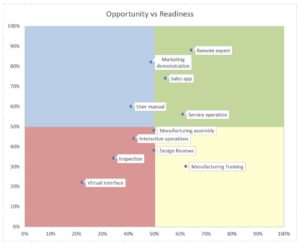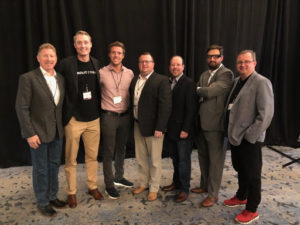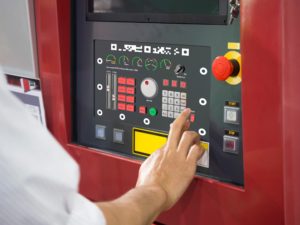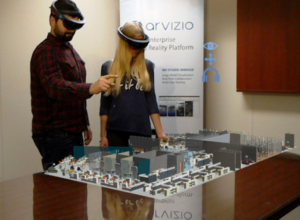Industry analysts continue to predict that the Augmented Reality (AR) market will exhibit significant growth and will support a transformation of the ways in which many companies run their businesses. However, as with any new technology, early adopters lead the way and many companies have not yet reaped the business benefits promised by AR.
In this AREA editorial, we take a look at some of the reasons why some companies are not yet fully embracing the potential of Augmented Reality and what the AR ecosystem is doing to overcome these concerns.
In short, what are the current barriers to adoption of Augmented Reality?
We break down this topic into a number of subject domains:
- Business barriers
- Use case applicability and deployment
- IT and security
- Human factors
- Content
- Enterprise systems integration
Business barriers
Key to business adoption and success of any new technology is the ability to focus on the business value of a new technology rather than the technology itself. Augmented Reality vendors need to position their offerings in ways that appeal to senior business buyers and decision makers in order to lower the barrier of uncertainty often faced by executives.
The recent publication by AREA member Atheer of a proposed Maturity Model for AR helps companies paint their own vision for a roadmap to AR adoption by building on the work of those who’ve gone before. It is a useful tool to describe the steps required to deploy AR successfully within their businesses. Geof Wheelwright, Director of Marketing Communications at Atheer, comments “The maturity model articulates how to get started and also how to mature enterprise use of AR to the point where it really does provide a competitive advantage. The AR Maturity Model helps organizations understand each of the four distinct stages of AR Maturity – and the clear steps they need to take to move from one stage to the next.”
AREA member Christine Perey of PEREY Research & Consulting adds:
“New technology adoption requires the active support of business managers. In an ideal scenario, the business line managers as well as the senior management are ready to embrace the new technology. However, most AR introductions suffer from one or more of the following shortfalls in management:
- Lack of leadership, either due to lack of confidence in the team or the technology, or, at the other extreme;
- Company leadership that is advocating for technology introductions without full understanding of timing (and perhaps too early or too quickly);
- Imbalances with (or poorly informed) risk analyses and assessments.”
Despite constructing a seemingly sound value proposition for the adoption of AR technology, projects often flounder for a number of reasons. Christine Perey comments:
“Many AR projects encounter financial barriers: either funding is insufficient and/or the resources are not distributed across all the components of a successful AR adoption campaign. There is also a general shortage of information about the costs and components of return on investment (ROI). Finally, AR product and service providers are searching for new and different business models (Data as a Service, Software as a Service, Hardware as a Service) which can be unfamiliar to customers and need to be tested before proven.”
To help companies create a robust assessment of the ROI offered by AR, the AREA is currently trialling an ROI calculator.
However, challenges remain. Christine Perey adds:
“Despite tools to calculate ROI, there continue to be challenges due to lack of clarity in:
- Final costs of AR hardware, services and software licenses;
- Unique or unusual recurring costs which greatly impact the total cost of ownership; or
- Benefits other than time savings and error reduction that are not easily measured in pilot projects.”
Use case applicability and deployment
A previous AREA editorial discussed the issues related to the fact that AR investigations often stall after development and demonstration of a “cool demo,” highlighting the critical importance of ensuring that investigations into AR are firmly grounded within an appropriate use case and application of the technology that makes sense for the investigating company.
An appropriate tool to use for such evaluations is the “Opportunity versus Readiness” map which, following a set of weighted criteria definitions of potential positive business outcomes and the technical, infrastructure, and other business readiness aspects, enables the initial mapping of potential AR applications to gain a business-centric view of where to focus initial investigations.
An example analysis is shown in Figure 1 with the most feasible and impactful applications appearing in the upper right-hand quadrant.
 |
|
Figure 1. Example ‘Opportunity versus readiness’ mapping
|
IT and security
As AR often relies upon the delivery of an enterprise’s Intellectual Property (IP) to new devices and systems that are logically and physically outside the corporate firewall, there clearly must be sufficient measures in place to protect this IP. A recent article explores many of the issues related to cybersecurity with AR, pointing out the uneasy position of AR-related innovation presenting new and ill-understood challenges to corporate IT leadership.
To support understanding of these issues, the AREA’s Security Committee is focused on studying security topics within AR and proposing best practices for adoption by vendors and users of the technology.
Human factors
Owing to the inherent nature of AR, involving both the delivery of visual and aural content whilst in some cases capturing information about the users, often coupled with doing a job differently, a number of concerns have been raised and studied.
Privacy protection is a common concern both legally and at a more personal level. As AR-enabled devices typically use computer vision technology with video feeds from the device camera(s), in addition to capturing sounds, user location, etc., it’s easy to see why there are concerns. However, industrial best practices provide a way to mitigate many of these concerns by ensuring users are aware of what is being captured and how that information is used.
Resistance to change caused by the transformation of an existing role to one that harnesses AR has been shown to be partially offset by involving those impacted in the process of technology adoption. Christine Perey comments:
“Attention to the worker/technician attitudes about AR is extremely important in all stages of the enterprise AR project.
Common steps to reduce resistance include working directly with end users in the design of user interfaces and proving use cases, providing incentives for participation and feedback in AR proof of concept projects and trials, and making sure that there is a highly respected tradesperson or technician on board with the AR introduction plan.”
The wearing or carrying of AR-enabled devices has safety implications. They can cause discomfort or reduce situational awareness, amongst other concerns. A recently published report by Electric Power Research Institute (EPRI) described some key findings and identified areas for further study. Furthermore, the AREA is actively engaged in supporting discussion of these topics, with a number of members participating in the AREA Human Factors Interest Group.
Content
The ready availability of applicable content to underpin scalable deployment of Augmented Reality apps and experiences is an ongoing challenge. Such content spans 3D models, step-by-step sequences for service and manufacturing processes, and more. A typical first foray into Augmented Reality often involves the manual re-modeling of 3D product models to support the AR experience. However, this manual task has inherent cost and time implications, typically raising management concerns about the applicability of AR to support scalable deployment of business processes.
Moreover, within many companies, there are existing 3D CAD files that offer reuse possibilities if suitable transformation, IP protection and optimization could be harnessed within an automation framework.
David Francis, Chief Marketing Officer at Theorem Solutions comments:
“Many companies will spend absolutely ages re-crafting their 3D CAD into something usable in a games engine, using a product like 3DS MAX.
However, in doing so, the connection to the initial design is lost. Moreover, as the correct geometry isn’t even used, the experience may be “representative” rather than actual.”
So, if you are planning on using 3D content in your XR app then it is probably best to find a solution that can make best use of your existing CAD assets. A solution that can read the geometry as it was designed and will prevent someone having to spend hours redoing something that the designer already did.”
Enterprise systems integration and interoperability
A compelling feature of Industrial AR is the ability to present pertinent content over the physical world. Depending upon the use case, this data, in principle, can be extracted from IoT, ERP, CRM, PLM, or other business systems. This systems integration task is often perceived as difficult and costly, if indeed possible at all.
Additionally, there should be systems in place to deliver content that is relevant, up-to-date, secure and correct. David Francis agrees that when such delivery systems are not available, “Any downstream changes to 3D CAD models will need to be manually re-modeled, as these are maintained outside of the PLM process.”
However, there is growing support for such enterprise systems integration by vendors in the AR ecosystem but more is needed. The AREA Interoperability and Standards Program is promoting a workshop in January 2020 to specifically focus upon AR interoperability requirements with the aim of sharing the outcomes with Standards Development Organizations and AR vendors to help accelerate adoption of standards within the AR community.
Conclusion
The following summarizes the points made in this editorial article:
|
Domain
|
Barrier
|
Recommended solutions
|
|
Business barriers
|
Uncertainty of value
Lack of strategic planning
|
Elevate sales tools and positioning to focus on value propositions of AR solutions.
|
|
IT and Security
|
Fear of IP leakage
Lack of understanding of AR solutions
|
Present clear and unambiguous technical means of addressing concerns; engage IT leadership.
|
|
Human factors
|
Privacy, change, safety concerns
|
Engage the workforce.
Continue focusing on and exploring safety aspects.
|
|
Content
|
Expensive re-modeling of existing assets.
Concerns over cost-effective enterprise scalability.
|
Develop automation frameworks to reuse existing 3D CAD assets to strip IP and reduce data size.
|
|
Enterprise systems scalability and interoperability
|
Concerns about cost of systems integration
Lack of standards
|
Further focus on leveraging data from enterprise systems.
|
We hope this AREA article has explained some of the current perceived challenges and ways in which they are being addressed. As with many new technologies, the AR market of solutions is rapidly maturing to address these challenges and working hard to help global industries embrace the value offered by AR to transform many business processes.
For further reading, we invite you to read a report, commissioned by the AREA, which examines some of these objections which pertain specifically to the manufacturing sector.
The AREA actively promotes discussion in a number of the domains discussed in this article by supporting various AREA committees. These comprise AREA members with expertise in the various topic areas who meet on a regular basis to help move the ecosystem forward.
We thank the contributors for their perspectives and welcome your feedback.











